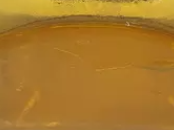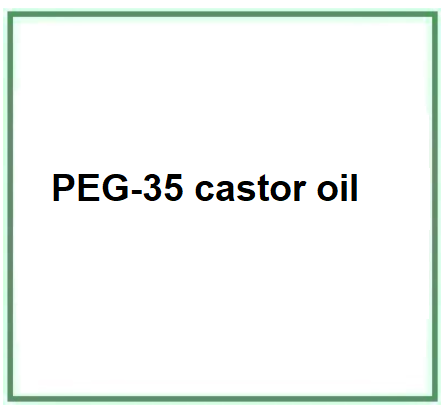PEG-35 castor oil is a chemical compound, a PEG (polyethylene glycol) derivative that has been obtained by a process of etherification and esterification from castor oil.
The name describes the structure of the molecule:
- PEG-35 PEG stands for polyethylene glycol, which is a polymer of ethylene oxide. 35 indicates the average number of repeating units of ethylene oxide in the PEG chain.
- Castor Oil is a vegetable oil obtained by pressing the seeds of the castor plant (Ricinus communis). Castor oil is rich in ricinoleic acid, a monounsaturated fatty acid.
The synthesis process takes place in different steps:
- Extraction. The first step involves extracting the oil from the seeds of the Ricinus communis (castor oil plant). This process is called cold pressing, in which the seeds are pressed to extract the oil.
- PEGylation. Castor oil is then modified to include polyethylene glycol (PEG) groups. This is done through a process called PEGylation, in which the PEG is attached to the castor oil using a catalyst. The number '35' in PEG-35 castor oil refers to the average number of ethylene glycol units in the PEG molecule.
Synthetically, it appears in the form of white flakes or an oily transparent liquid. Flammable. Incompatible with strong oxidising agents. Odourless, insoluble in water. Characteristic smell.


Since the PEG (Polyethylene glycol) family is very numerous and can be found in cosmetic, industrial, pharmaceutical, medical and other products, it is necessary to make an introductory statement on the subject, which is rather complex from a safety point of view because these products not only come into contact with the skin, but, as in the case of medical products, are ingested.
PEGs (polyethylene glycol) polymerise condensed ethylene oxide and water and are referred to as polyethylene glycols, but in reality they are complex chemical components, polymers bonded together. For example, plastic is polyethylene and has a hard consistency, while polyethylene combined with glycol forms a liquid. PEGylation is produced not only as etherification, but also as transesterification, which is the transformation of an alcohol by an ester. The number appearing after the abbreviation PEG refers to mol of ethylene oxide and the higher this number is, the less it can penetrate the skin.
Safety.
The term 'eth' refers to the ethoxylation reaction with ethylene oxide after which residues of ethylene oxide and 1,4-dioxane, chemical compounds considered carcinogenic, may remain. The degree of safety therefore depends on the degree of purity of the compound obtained. No manufacturer appears to provide this information on the label, at least as of the date of this review.
What it is used for and where
Cosmetics
Skin conditioning agent - Miscellaneous. This ingredient has the task of modifying the condition of the skin when it is damaged or dry by reducing its flakiness and restoring its elasticity.
Surfactant - Emulsifying agent. Emulsions are thermodynamically unstable. Emulsifiers have the property to reduce the oil/water or water/oil interfacial tension, improve emulsion stability and also directly influence the stability, sensory properties and surface tension of sunscreens by modulating their filmometric performance.
Emulsion stabilizer. Emulsions are thermodynamically unstable. Emulsion stabilisers improve the formation and stability of single and double emulsions. It should be noted that in the structure-function relationship, molar mass plays an important role.
CAS: 61791-12-6 generic
![]() PEG-35 castor oil
PEG-35 castor oil 



